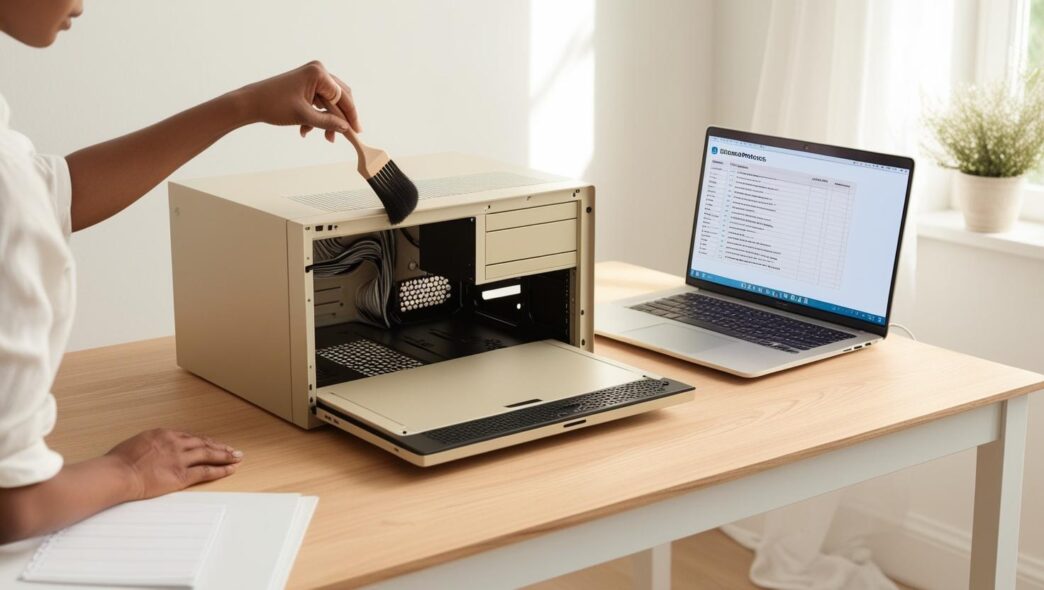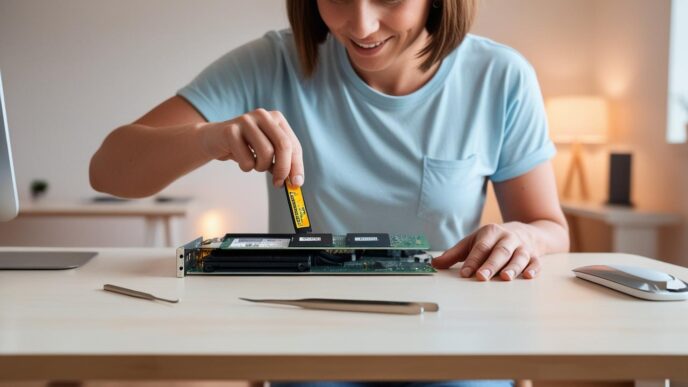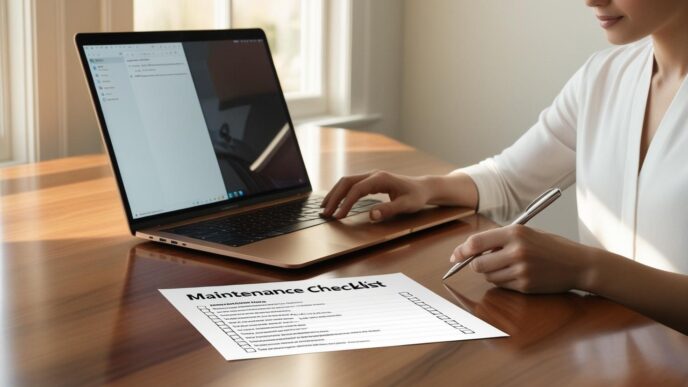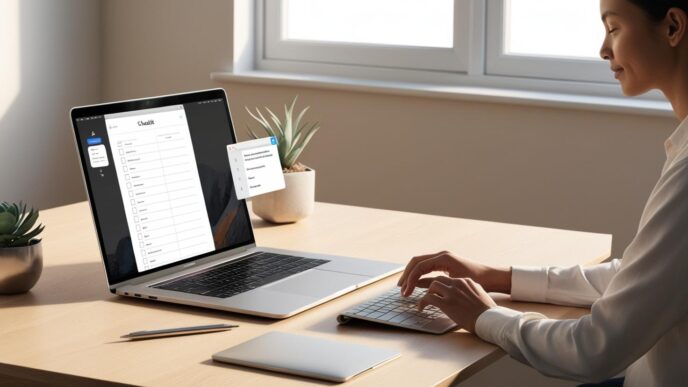Introduction
Think your slow, aging PC is beyond saving? You might just need smarter upkeep—not a brand-new system. Too often, users rush to replace perfectly functional computers when all they really need is some routine maintenance and targeted upgrades.
This guide will walk most computer users through expert-backed strategies that dramatically extend the lifespan of a desktop or laptop. Whether you’re a student relying on a budget-friendly setup, a remote worker managing productivity, or a casual home user hoping to delay the next big expense, this article gives you the tools to make your PC run smoother, longer.
We’ll break down real maintenance schedules, upgrade strategies, common mistakes to avoid, and proven tips from experts and everyday users alike. Let’s start with why this matters in the first place.
Why Lifespan Extension Is Smart and Practical
Extending your PC’s life isn’t just about saving money—though that’s a big benefit. It’s also about improving reliability, reducing e-waste, and maintaining stable performance.
What Causes Computer Aging?
- ⚡ Heat buildup from dust and poor airflow
- ⚡ Wear and tear on components over time
- ⚡ Storage overload from outdated files and unused software
- ⚡ Incompatibility from outdated drivers or unsupported software
A widespread myth is that you must replace your PC every 3 to 5 years. In reality, a well-maintained Windows system can last 7 to 10 years with proper care and selective upgrades.
Real-World Contrast
Consider two five-year-old laptops. One gets routine cleanups, software updates, and runs light tasks. The other hasn’t been cleaned or updated in years. The first runs smoothly, while the second overheats, freezes, and drains battery life rapidly.
📌 Why It Matters: Lifespan extension is about prevention—not just repairs.
Expert-Recommended Maintenance Habits for Longevity
Consistent maintenance is the foundation of computer longevity. The good news? You don’t need to do it all at once. Breaking it into weekly, monthly, and seasonal tasks makes it easy to manage.
Weekly Tasks
- ✅ Clear temp files and browser cache
- ✅ Restart your system to free up memory
- ✅ Check for system and driver updates
Monthly Tasks
- ✅ Uninstall unused software
- ✅ Run Disk Cleanup or equivalent tool
- ✅ Monitor performance using built-in diagnostics
Seasonal Tasks (Every 3–6 months)
- ✅ Dust interior components and vents
- ✅ Reseat cables and inspect ports for wear
- ✅ Ensure cooling systems are running efficiently
Mini Table:
| Task Frequency | Example Tasks |
|---|---|
| Weekly | Cache clear, restart |
| Monthly | Disk cleanup, uninstall bloat |
| Quarterly | Dust removal, hardware check |
💡 Take This With You: Consistency matters more than complexity.
The Right Upgrades at the Right Time
Upgrades can breathe new life into aging systems—but timing and need are key.
Key Upgrade Options
- RAM: Boosts multitasking and prevents freezing
- SSD: Replaces a slower hard drive for faster boot and load times
- CPU/GPU: For users with advanced needs (gaming, video editing)
- Peripherals: Sometimes all you need is a better monitor or keyboard
Mini Scenario: A user with a sluggish laptop upgraded to an SSD and added more RAM. Boot time dropped from two minutes to under 30 seconds.
Optional Table:
| Upgrade Type | Impact | Best Timing |
|---|---|---|
| RAM | Multitasking | When apps start lagging |
| SSD | Boot speed | When startup is slow |
| GPU/CPU | Performance | System is 5+ years old |
🔁 Putting It All Together: Upgrades bridge the gap between new and obsolete.
Cooling and Dust Control: The Hidden Lifespan Saver
Dust and heat are silent killers. Keeping your system cool can significantly extend hardware life and improve day-to-day performance.
What Overheating Does
- Forces CPU/GPU to slow down (thermal throttling)
- Causes random shutdowns or blue screens
- Damages internal components over time
What to Clean and How Often
- Fans, vents, and heatsinks: Every 3–6 months
- Laptop vents: Use compressed air and soft brushes
- Desktop airflow: Organize cables and ensure proper fan direction
Real-World Fix: A laptop user facing shutdowns during Zoom calls cleaned the vents and repositioned their device on a hard surface—issue resolved.
💡 Take This With You: A cool computer is a happy computer.
Software Strategy: Keep Things Updated and Lightweight
Software clutter can be just as damaging as physical clutter.
Key Software Tips
- Keep Windows and drivers updated: Fix bugs, improve security
- Limit startup programs: Speed up boot and reduce background load
- Remove unused apps and bloatware: Free up space and memory
- Create restore points before major changes: Easy rollback if needed
Scenario: A student delayed updates for months. A critical Windows patch failed, corrupting files mid-semester. After learning to automate updates, they never missed one again.
🧐 Remember This: Software rot is real—clean systems live longer.
When to Upgrade vs. Replace Your PC
Sometimes, upgrades just aren’t enough. Recognizing when it’s time for a new device can save time and frustration.
Signs It’s Time to Replace
- Motherboard or power supply issues
- OS no longer receives updates
- Multiple components failing together
- Repairs cost more than replacement
Use Cases:
- Email and browsing? Older systems may suffice.
- Heavy video editing or gaming? Modern specs may be necessary.
Optional Table:
| Symptom | Can Upgrade Help? | Consider Replace? |
|---|---|---|
| Slow boot | ✅ SSD | ❌ Only if very outdated |
| Frequent crashes | Maybe | ✅ If hardware is failing |
🔁 Putting It All Together: Upgrading helps—but not in every scenario.
Expert Advice: Lifespan-Boosting Habits You Can Start Today
It doesn’t take an expert to adopt expert-level habits. Start with simple steps that offer long-term protection.
Daily and Weekly Habits
- ✅ Shut down or restart weekly to refresh memory
- ✅ Use surge protectors to prevent hardware damage
- ✅ Avoid extreme temperatures and blockages (keep vents clear)
Monthly and Seasonal Habits
- ✅ Back up files regularly
- ✅ Clean workspace and device exterior
- ✅ Monitor system performance and storage trends
Expert Quote: “Clean once a season, upgrade only when needed, and avoid panic replacements.”
📌 Why It Matters: Simple habits add years to your system’s life.
Final CTA Section: Take Charge of Your PC’s Lifespan Today
Your PC doesn’t need to be cutting-edge to work well—it just needs thoughtful care. From weekly maintenance to smart upgrades, the power to extend your computer’s life is in your hands.
🔔 Call to Action: Bookmark this guide, pick one task to do today (like dusting vents or clearing temp files), and build your routine from there. Your future self—and your PC—will thank you.
📌 Privacy Note: This article is for general informational purposes only. It does not collect personal data, and no professional services are being sold through this guide.













